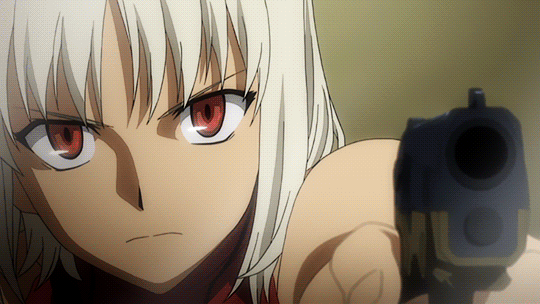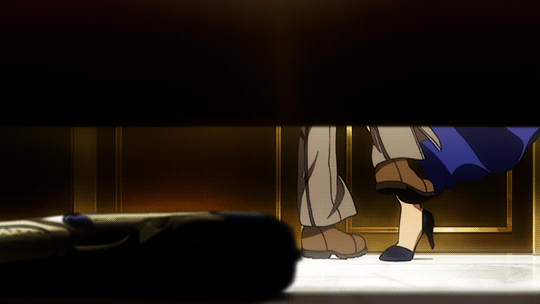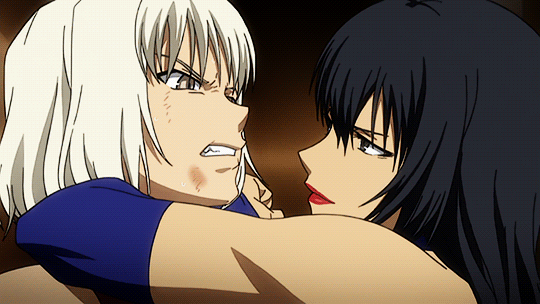#canaan
Text

Anat the Canaanite goddess of sexual love, war, and hunting. Progenitress of heroes, lady of Palestine.
Info on each sketch below:
Top right: Anat is shown here in a man's war kilt and her hair pulled up, a nod to the Anat statue head found in Gaza. This is after Baal Hadad's 'death', with her cheeks gouged by grief and face painted to resemble a man's beard. This beard imitation combined with her topless clothing and the horned headdress she wears is to evoke a sense of Baal having risen from the dead to claim revenge.
Bottom Right: An exploration of her musculature, with a focus on the markings on her hips and stomach. Drawn from female Canaanite fertility idols that show similar markings with a lot of emphasis on the navel/bellybutton.
Bottom Left: Anat at the feast of Baal's new palace. She wears expensive, imported Egyptian linens. Her hair is braided, eyelids darkened with kohl, and hands darkened with henna.
Center: Anat's fullbody with lots of influence from historical Palestinian dress. She is shown with a vulture because Aqhat, killed at her order, was eaten by vultures and because Anat is often shown with wing imagery.
1K notes
·
View notes
Text
A few days ago, in my quest to fight the antisemitism that lifted its head around the world following the massacre of October 7th, I stumbled upon a clip from a UN assembly where the speaker asked a simple question-
Dear Arab world, where are your Jews?
A lot of people think that Israeli roots come from Europe exclusively. But in fact, Jewish people were hunted in all corners of this world. In Europe, of course, but also in Asia, Africa and other places all over the planet.
My grandma is an Iraqi Jew. Iraqi Jewish community is one of the oldest Jewish communities in the world, being the direct descendants of the Babylonian exile Jews, so ancient it is an exile mentioned in the Bible.
Recent studies, in which DNA retrieved from canaanite burial lands was compared to current populations in the area of ancient Canaan, has found that Iraqi Jews share the highest similarity to canaanite DNA out of all Jewish communities, more than 50% of the DNA on average.
All the beautiful, peaceful Jewish communities of the Arab world were wiped out in the blink of an eye.
The Arabic world has never treated their Jewish communities as equal citizens, oftentimes robbing them of any rights and performing violent acts of genocide against them (check 'Farhud' on Google).
But their voice was silenced once they fled to Israel.
So I decided to recap my grandma's story in the comments of the clip:
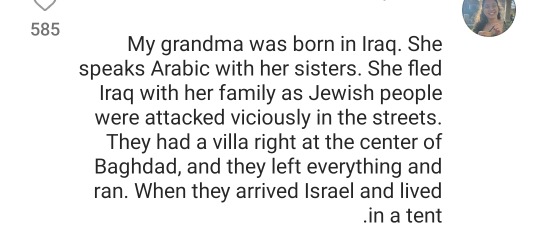
Soon after, many Jewish people with Arabic, or 'Mizrahi' heritage, shared their stories as well:



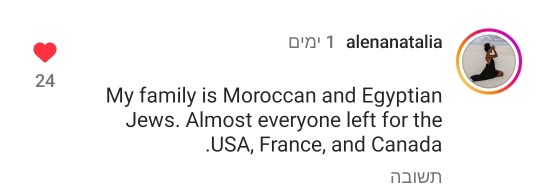


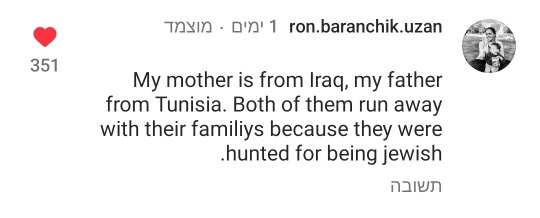
Jewish people all over the planet were driven out of their homes, ethnically cleansed by their neighbors, rulers, and governments.
We are still not welcome in most of the countries of the Arab world. Unable to see glimpses of our history.
My grandma still wishes she could see the house she grew up in. Holding the memories, but unable to set foot in that land, because she would be executed.
Nevertheless, she's not a refugee. She might've fled to Israel, but in Israel, her family got equal rights as citizens, and she built a house on a land she now calls her home.
Don't erase my grandma's story. Don't erase the Jewish ethnic cleansing that brought her to seek a safe haven in Israel.
Israel is a home for more than half of the Jewish people on this planet. Out of the ~8,000,000 Jews who live in Israel, there are about ~2,500,000 Jews of Mizrahi heritage.
And as Golda Meir once said: "our secret weapon is that we have nowhere else to go."
#omi talks#jewish#Iraqi Jews#jumblr#israel#mizrahi jews#canaan#I hate the fact that Israel only trends on this hellsite when people wish its destruction#it's never two state solution it's always 'from the river to the sea'#that's just messed up
1K notes
·
View notes
Text
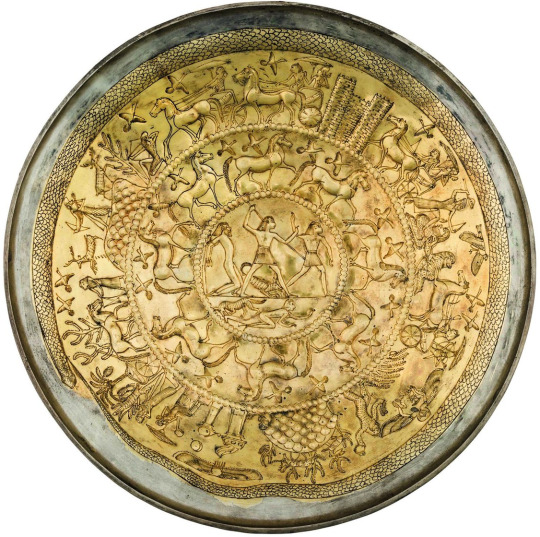

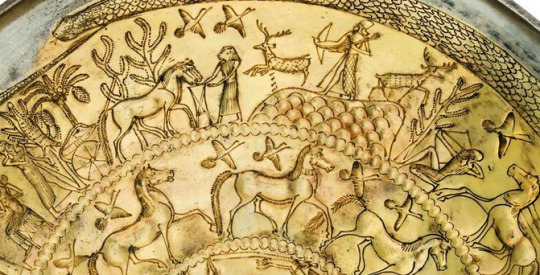

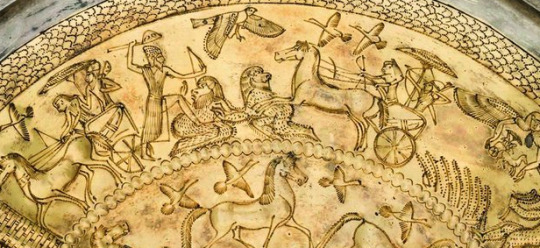
Phoenician Bowl with encircling Serpent
Bernardini Tomb (Palestrina, Italy)
c. 700 BCE
The National Etruscan Museum of Villa Giulia
Rome, Italy
#cyprus#rome#italy#egypt#egyptian gods#canaan#canaanite gods#phoenicia#phoenician gods#aram#aramean gods#syria#syrian gods#levantine gods#mesopotamia#mesopotamian gods#pagan gods#polytheism#archeology#magic#witchcraft#witchblr#paganblr#occult#uroboros#ouroboros#warfare#hunting#soldiers#birds
904 notes
·
View notes
Text
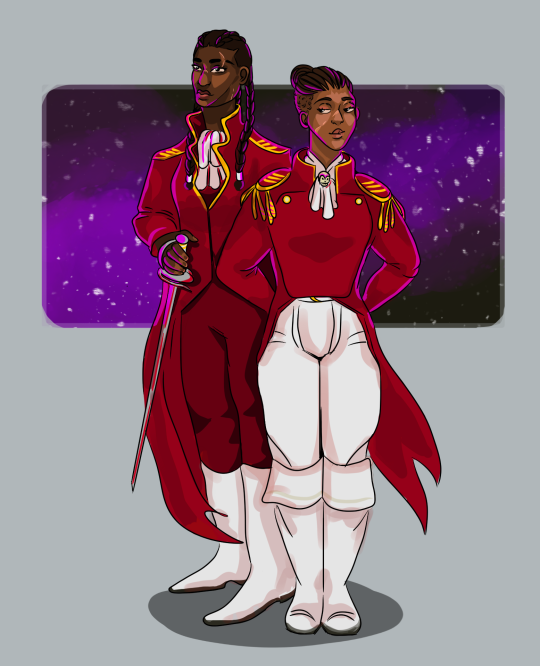
Judith and Marta repping the Cohort first and foremost
#judith deuteros#marta dyas#tlt fanart#the locked tomb#gideon the ninth#canaan#tlt#fan art#im kinda sorry for Judith since I learned she was not only rejected by her cavalier but grew up thinking that was absolutely wrong#but she's also such a lawful rule-follower and so self-important sometimes!#i have only read Harrow the Ninth so far that's where I got these opinions lol
167 notes
·
View notes
Text


Canaan ; Canaan ☆ Good Smile Company
#canaan#canaan figure#good smile company#gsc#anime#anime figure#figure#figure collecting#anime figurine#figurine#scale figure#anime collecting#myfigurecollection#manga
58 notes
·
View notes
Photo

283 notes
·
View notes
Text

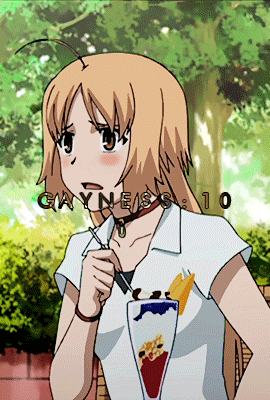

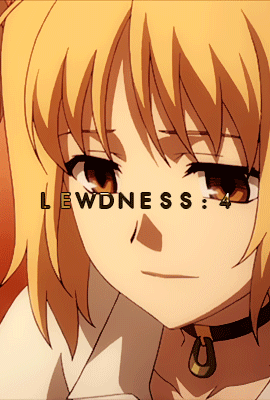






@giftober 2023: DAY 31 - FREE CHOICE
CANAAN & MARIA YURIPEDIA STATISTICS
#Canaan#Maria Oosawa#giftober2023#animangaladies#animangahive#fyanimegifs#animeedit#animationedit#i came across their yuripedia articles purely accidentally#and i completely lost it and knew id throw them to the free day#anyways thank u for yet another giftober i will not open photoshop for a week#we will see again next year
99 notes
·
View notes
Text

#CANAAN#2010#good smile company#advertisement#00's anime#anime figure#anime figures#anime#figure#figures#figurine#figurines
66 notes
·
View notes
Text
Five underappreciated anime that I would recommend!
1. Canaan (2009)
This is, from what I understand, an adaptation of a side-story chapter for the visual novel series 428: Shibuya Scramble, guest-written by Nasu Kinoko and guest-illustrated by Takeuchi Takashi. That is to say, the Type-Moon guys — the creators of Tsukihime, Kara no Kyoukai, and the now-legendary Fate/Stay Night. However, Canaan doesn’t take place in the Type-Moon shared universe(s), since it’s for another company’s property.
That being said, the anime adaptation is quite comprehensible on its own terms, likely due to the adaptation being written by the prolific and highly skilled screenwriter Okada Mari (Hanasaku Iroha, O Maidens In Your Savage Season, Mobile Suit Gundam: Iron-Blooded Orphans, Maquia). Her writing imbues the narrative with enough emotional intensity to make up for the occasionally-convoluted nature of the plot, and the backstories of the characters are hinted at just enough so that the viewer can understand their relevance, without taking up too much precious screen time. It can be a little hard to follow at points, but I ended up understanding it decently well anyway.
The production values are very high indeed, due to the anime being produced by P.A. Works, and directed by Andoh Masahiro (Sword of the Stranger, Hanasaku Iroha, O Maidens In Your Savage Season). The action animation is consistently stunning, the characters are beautifully expressive, and the overall look of the show is fantastic.
And the voice acting is an absolute treat, with the lead role of Canaan herself taken by Sawashiro Miyuki, the antagonist role of Alphard taken by Sakamoto Maaya, and Nanjou Yoshino in the role of Oosawa Maria, the POV character for a lot of the story. The supporting voice cast is packed with talent too — Hamada Kenji, Tanaka Rie, Nakata Jouji, Tomatsu Haruka, Hirata Hiroaki, Noto Mamiko, and even Ootsuka Akio in a minor role!
The premise is sort of a science fiction type of thing, but set in the (quasi-)contemporary location of 2000s China, where outside of the sci-fi conceit, the setting is largely realistic. The tone and mood is mostly that of an action thriller, with some nail-biting suspense here and there, but there are some beautifully soft and tender moments as well — often involving Canaan and Maria. Yes, folks, this has yuri in it, although it’s (strongly) subtextual.
Anyway, I would recommend this to people who love Ghost in the Shell: Stand Alone Complex, Kara no Kyoukai, Fate/Zero, and probably also Cowboy Bebop.
2. Tetsuwan Birdy OVAs (1996)
This is distinct from the later adaptation of the original Tetsuwan Birdy (Birdy the Mighty) manga, called Tetsuwan Birdy Decode, which came out in the late 2000s — this one came out in 1996 and was produced by Studio Madhouse in their prime.
The main characters are Senkawa Tsutomu (voiced by Iwanaga Tetsuya), a hapless teenager who gets accidentally killed(!) by an alien spaceship on his way to school one day, and Birdy Cephon Altirra (voiced by Mitsuishi Kotono), a human-looking alien and an intergalactic government agent who saves Tsutomu by merging her body with his. Effectively, they become two people in one body, which can shift between the forms of Birdy and Tsutomu…. except Birdy still needs to deal with all the rogue aliens who threaten the safety of the galaxy, while Tsutomu needs to study for his high school entrance exams. From what I’ve been told, the premise is fairly reminiscent of Ultraman and other classic tokusatsu series.
It’s four tight episodes of classic ‘90s OVA goodness, with a fun and slightly silly sci-fi concept that is nonetheless wrung for some surprisingly effective drama at times. The main thrust of it, though, is action comedy — and it definitely delivers on that front. The fight scenes are superbly animated, including some early-career work from now-legendary animator Suzuki Norimitsu, and the character designs by Takahashi Kumiko (Witch Hunter Robin, Snow White with the Red Hair, Cardcaptor Sakura) are amazingly expressive. Birdy’s striking asymmetrical design is a particular favourite of mine. The direction by Kawajiri Yoshiaki (Cyber City Oedo 808, Ninja Scroll, Vampire Hunter D) is solid, and the writing is quite serviceable despite the brevity and premise.
Overall, I wouldn’t say it’s much of an intellectual watch, but if you just want a fun action-comedy ride with an extremely charismatic female protagonist and stunning animation quality, Tetsuwan Birdy is likely to be your jam. I’d recommend it to people who enjoy classic tokusatsu series, the original ‘90s Sailor Moon anime, and the less-depressing parts of Neon Genesis Evangelion.
3. Noir (2001)
This anime series is perhaps not as underappreciated as the others on this list, but I do still feel that not enough people have seen it. It was made by the studio Bee Train, and it’s the first entry in their so-called “Girls with Guns” trilogy (which isn’t actually a coherent trilogy, since they’re three different stories). The series was made right at the end of the cel-anime era, before the transition to digital colouring and compositing, so the masters were shot on film, but it was also made at the beginning of the slow transition to widescreen TV broadcasts, so it’s one of the very rare cel anime that’s in 16:9. This allows for a beautifully detailed look that, IMO, serves to offset the occasionally-limited animation and the frequent re-use of footage.
The premise is basically “secret assassins in France are caught up in weird intrigue and conspiracies”; as such, there’s a lot of very fun gunplay and kickass fight scenes, but also a lot of suspense and mystery. The writing is a little bit slipshod at times, but it ends up holding together, and the characters and (especially) the fantastically moody vibe make the show worth watching.
The characters are imbued with a lot of life and colour, both by their extremely attractive designs and by their voice actors’ wonderful performances. Mireille Bouquet, a young Corsican assassin and one of the two protagonists, is voiced by Mitsuishi Kotono; Yuumura Kirika, the other main protagonist who is a Japanese schoolgirl who has seemingly lost all her memories (but not her exceptional assassin skills), is voiced by Kuwashima Houko; and the mysterious Chloe, who shows up partway through the show, is voiced by Hisakawa Aya. There are definite yuri vibes between Mireille and Kirika, but as with Canaan, it’s all subtextual.
The main draw of the show, though, is its phenomenal soundtrack, courtesy of Kajiura Yuki (.hack//Sign, Kara no Kyoukai, Fate/Zero, Sword Art Online, Demon Slayer) in her very first anime scoring gig. It’s at times propulsive, at times dark and moody, at times beautifully serene, at times melancholy and nostalgic — and it’s utterly memorable.
I would recommend Noir to anyone who likes Canaan, Witch Hunter Robin, Ghost in the Shell, or anyone who just wishes that James Bond were a woman.
4. Flip Flappers (2016)
This anime was produced at Studio 3Hz and directed by Oshiyama Kiyotaka, in a dazzling yet underappreciated directorial debut that was presaged by his impressive animation work on Dennou Coil, Space Dandy, A Letter to Momo, The Secret World of Arietty, and The Wind Rises. Owing to this extremely solid animation background, Oshiyama was able to recruit a lot of prime animation talent for Flip Flappers, and it definitely shows in the stunning sakuga of the wild action sequences that pepper the show’s narrative.
While the fantastic animation is a key draw of this show, the sheer creativity in the worldbuilding, conceptual, and visual design spheres also contribute to its inimitably psychedelic look and feel. The landscapes of the worlds contained in Pure Illusion — the dream-realm that the protagonists enter each episode at the behest of a mysterious scientific organisation — and of the “real” world are whimsical, storybook-like, and slightly “off” in a slightly unsettling but compelling way.
The dreamlike atmosphere pervades the narrative as well — very little about the mechanics of the world is specified out loud, relying heavily on symbolism and visual storytelling to do the heavy lifting for the audience’s understanding. This might be a turn-off for audiences who prefer to have things spelled out for them clearly, but the point of this story is not always to make perfect logical sense, but rather to work on an emotional and metaphorical level. And work, it certainly does.
The episodic structure involving the various worlds of Pure Illusion explores the concept of the Umwelt (the individual sensory “world” of a person or organism), as well as some Jungian concepts and archetypes, in order to express the strange and sometimes-scary developmental stage of adolescence. The characters of Cocona (voiced by Takahashi Minami) and Papika (voiced by Ichimichi Mao) undergo a metaphorical and literal puberty, a coming-of-age similar in some ways to that experienced by the protagonist of FLCL, but with significantly more yuri. In fact, this show has the most outright yuri of any of the anime on this list. But that isn’t very strange for what is essentially a psychedelic magical-girl show: lots of magical-girl anime seem to include homoerotic vibes in some form or another, from Sailor Moon to Nanoha to Madoka.
There are some minor flaws in the storytelling towards the end, IMO, but overall it’s a wonderfully impactful emotional journey to watch Flip Flappers. Plus, the OP and ED are both extraordinarily catchy tunes that I’ve found myself humming on many an occasion.
I’d recommend this anime to anyone who loves weird magical-girl stuff, weird yuri, and/or amazing action animation.
5. Claymore (2007)
An adaptation of the manga by Yagi Norihiro, this anime is considered by many to simply be “basic”, or at least simply “inferior to the manga”. Now. I haven’t read the original Claymore manga (yet! I plan to eventually), but I found this anime to be compelling nonetheless. And if it really is the case that the manga is better, then I definitely look forward to diving in.
Having been produced by Studio Madhouse in the mid-2000s, it’s unsurprising that the vast majority of this anime was outsourced to Korean animation studio DR Movie, a longtime powerhouse subcontractor for both Japanese and American animation alike. That said, the direction of Tanaka Hiroyuki (director of a portion of Hellsing Ultimate and frequent close collaborator of Attack on Titan director Araki Tetsurou) remains sharp, compensating for the sometimes-limited animation with good storyboarding and a strong sense of mood and atmosphere.
Another aspect of Claymore which helps make up for the occasional visual shortcomings is the soundtrack by Takumi Masanori. The compositions are a mix of harder rock and electronic elements with a strong orchestral backbone, as befits a dark-fantasy setting and mood — the faster pieces are edgy and propulsive, very appropriate for the bloody action scenes, and the calmer pieces have a melancholic beauty to them that sticks in one’s memory. I wish the soundtrack were on Spotify, but alas, it is not.
The other sonic element that helps this anime out immensely is its absolutely STACKED voice cast. The main character, Clare, is voiced by Kuwashima Houko, in a fantastic yet understated performance. The other main character, Raki, is voiced by the less-well-known Takagi Motoki, but nearly all the other roles — including many bit parts — are filled with industry legends. Teresa is voiced by Park Romi, Miria is voiced by Inoue Kikuko, Irene is voiced by Takayama Minami, Rubel is voiced by Hirata Hiroaki, Priscilla is voiced by Hisakawa Aya, Ophelia is voiced by Shinohara Emi, and Jean (whom I cannot help but ship with Clare: there’s so much homoerotic tension there!) is voiced by none other than Mitsuishi Kotono. Yes, they got three of the original Sailor Senshi VAs — and I don’t know why that’s funny to me, but it is. And all of the voice actors deliver killer performances.
The premise of the show, before I completely forget to explain it, is that of a dark fantasy world where demons called youma ravage human settlements, with only the titular Claymores to protect humanity. They are a guild of platinum-haired and silver-eyed warrior women who possess superhuman fighting abilities, due to the fact that they’ve been fused with youma essence, and wield the massive broadswords that give them their name. Basically, (s)he who fights monsters must become (partly) a monster to do so.
I’ve heard the vibe of Claymore compared to manga like Berserk, and I don’t know how true that is (not having read the latter for myself), but there’s certainly a lot of bleakness and monstrosity in this fantasy tale. However, the Claymore manga was published in none other than Weekly Shounen Jump, so it’s perhaps unsurprising that the story remains resolutely forward-looking, the protagonists’ arcs focussing on the power of grit, determination, true friendship and loyalty, and protection of the weak and downtrodden. It’s never cynical or sarcastic — always straightforward and sincere despite the frequent darkness of the story.
The writing is consistently solid, even through the controversial anime-original ending (the manga continues long past the point where the anime cut things off), so I’m not sure who to point to for that: Yagi Norihiro for writing the original material, or Kobayashi Yuuko (JoJo’s Bizarre Adventure, Attack on Titan s1-3, Kakegurui, Casshern Sins) for adapting it cleanly for the screen? Either way, it made me want to read the manga to experience more of these compelling characters and their travails.
I would recommend this anime to those who enjoy Kill La Kill or RWBY, or just to those who enjoy powerful women hacking at monsters with massive weapons and making lots of blood spray out.
#anime recommendation#anime recs#flip flappers#tetsuwan birdy#birdy the mighty#claymore#noir#noir 2001#canaan#long post#personal#anime
101 notes
·
View notes
Text
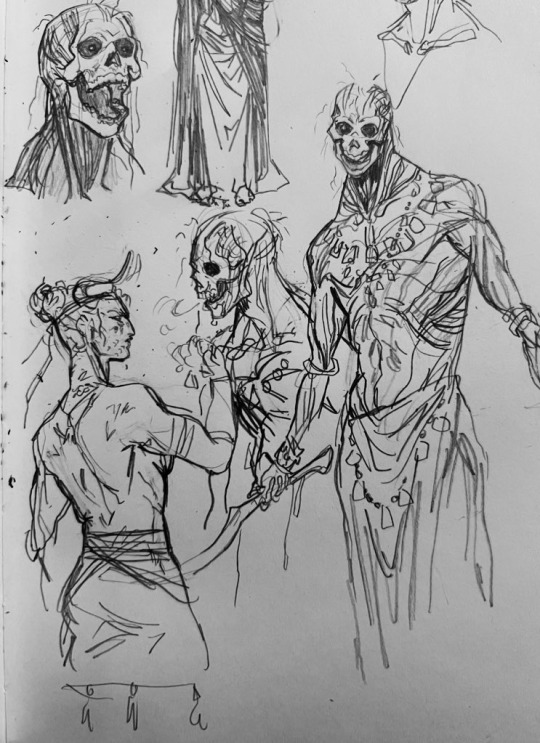

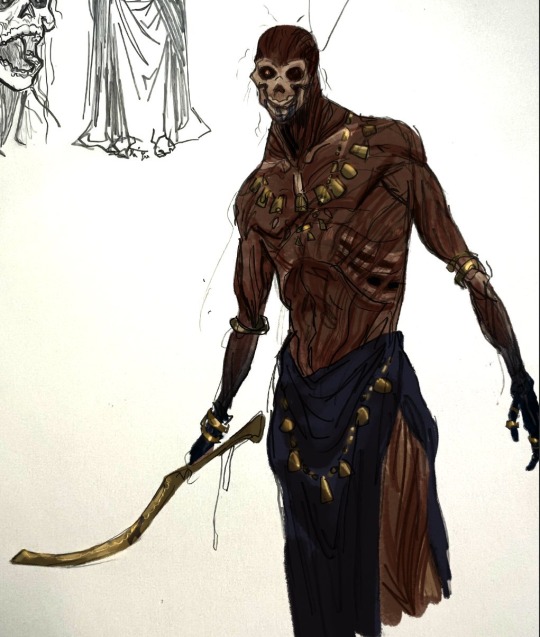
Mot, Canaanite god of death, pestilence, sterility.
His clothes are rotted fibre and raiment tarnished gold. His hands are stained with oil, flesh shrunken and dried by the sun and salt.
272 notes
·
View notes
Text
Hello, yes, I am here to discuss real life changes we can make to aid Palestine long term. It’s not a lot, but this is one I’ve made.
I use olive oil to cook. I always have it stocked in my kitchen. Now, instead of just buying it at the grocery store, I get it from Palestine. I may only be a drop in the bucket but with my dollar bill I will actively say, “Palestinian olive oil is the best olive oil. If you burn their olive trees, it does not mean I will buy yours instead. I am a part of the global demand that those trees exist and continue to exist.”
So anyway. That’s a step I’ve taken. It’s a small one, but if ten thousand other feet step in the same direction, then maybe they’ll hear us moving.
#palestine#free palestine#west bank#canaan#nablus#olive oil#cooking#pantry#global demand#i stand with palestine 🇵🇸#🇵🇸
28 notes
·
View notes
Text

I had the opportunity to draw a tarot card illustration of Ziggy for a Xeno Tarot Project as the Three of Swords!
Details about the symbolism in this artwork below the cut (/!\ Xenosaga spoilers /!\)
The Three of Swords tarot card is associated with hurt, betrayal and overcoming grief, which is very fitting for Ziggy. The card usually depicts a heart pierced by 3 swords, so I reused that imagery by having Ziggy's heart pierced by them. I wanted the swords to be more than objects, so I associated them to 3 characters who are cause of grief for Ziggy: to the left, Sharon, his wife, murdered with her son in front of him ; to the right, Canaan, who believed his existence had hurt Ziggy and chose to sacrifice his life to repent. The third sword is connected to the black silhouette in the back, the Black Testament, Voyager, the traitor.
The background is the stained glass from the Archon Cathedral, a place that haunts Ziggy, filled with death and despair. The red at the bottom represents the blood spilt there, and Voyager’s silhouette cutting the light from the window illustrates the heavy shadow he brought on Ziggy. The halo reinforces the cathedral aesthetic, and cuts Voyager’s shadow as a symbol of eventually overcoming that darkness he left behind.
The flowers over Ziggy’s chest, covering the swords wound, serve a similar purpose: they’re a rose of Sharon and momo peach blossoms, for the family he lost (Sharon & Joaquin) and the family he found (MOMO).
I hope you like this artwork as much as I enjoyed creating it!
96 notes
·
View notes
Text

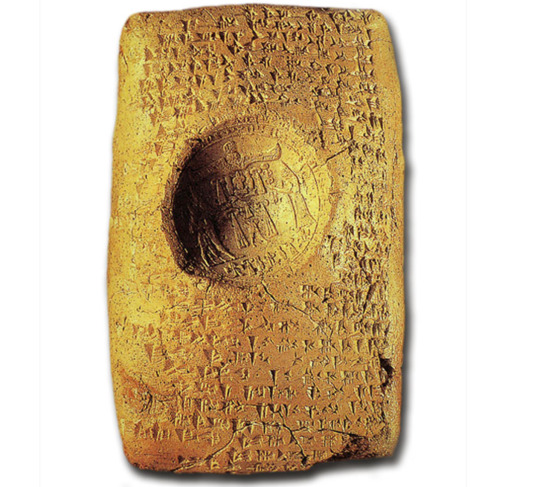
Divorce-Writ of King Ammistamru II
Ugarit, Syria
c. 1250 BCE
A tablet documenting the divorce of King Ammistamru II of Ugarit fromhattusa the daughter of the Amorite king Benteshina, sealed by the Hittite King Ammistamru. The king stands to the right, holding a spear, next to the "Weather God" who holds a club. They are both facing a long-robed female goddess (Arima, the chief Hittite sun-goddess) who stands at the left.
Source: Virtual Museum of Syria
#ugarit#hittite#baal#hadad#ugaritic costume#arima#sun goddess#huttusa#hittite gods#canaan#canaanite gods#phoenicia#phoenician gods#aram#aramean gods#syria#syrian gods#levantine gods#mesopotamia#mesopotamian gods#pagan gods#polytheism#archeology#magic#witchcraft#witchblr#paganblr#occult
266 notes
·
View notes
